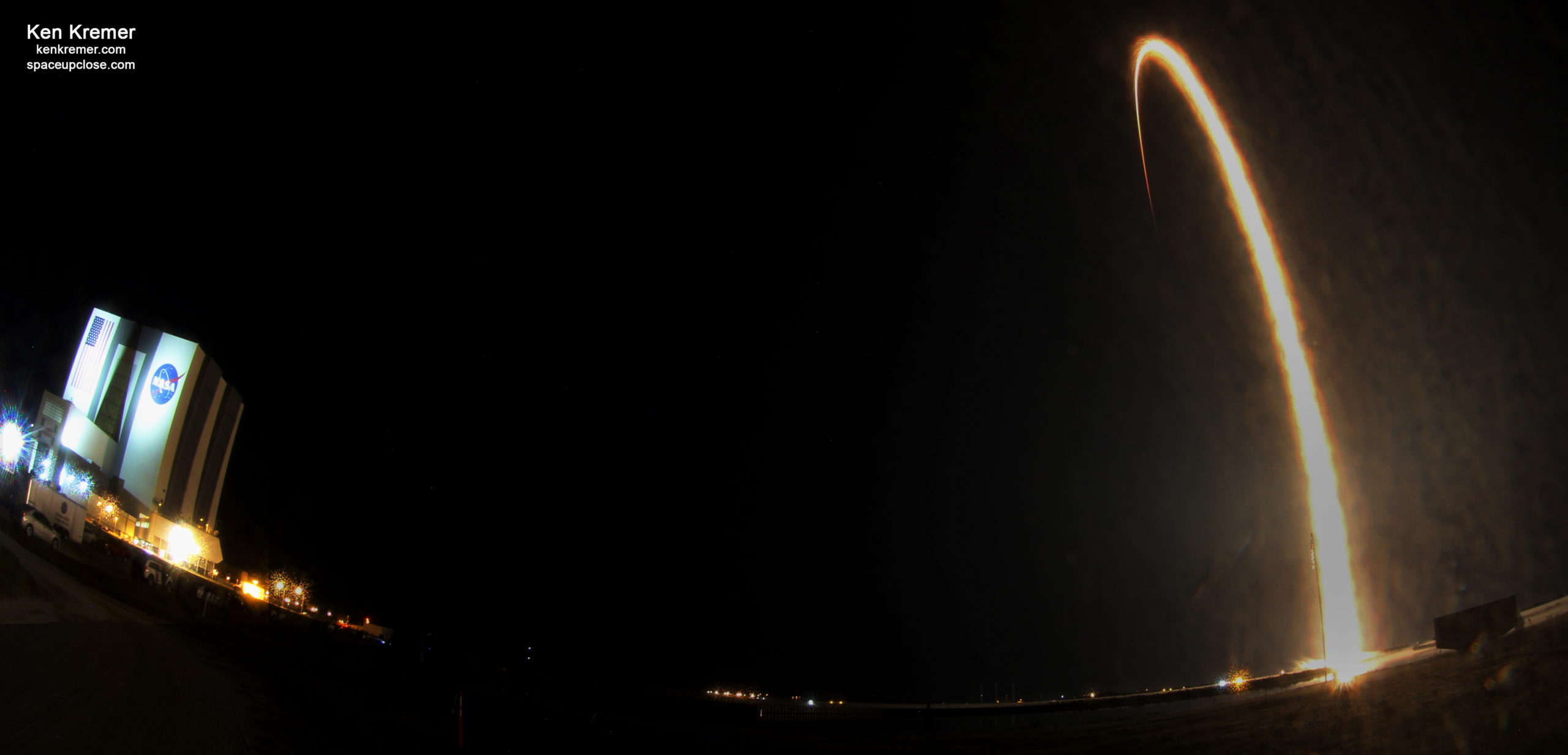
For SpaceUpClose.com & RocketSTEM
KENNEDY SPACE CENTER, FL – A recycled SpaceX Falcon 9 rocket established a new record by launching and landing the first time ever for the ninth time after blasting off at pre- sunrise this morning Sunday, March 14, and successfully delivered another tranche of 60 Starlink broadband internet satellites to orbit – marking the 3rd Falcon 9 launch in 10 days from the Florida Space Coast and coming just three hours after switching clocks to daylight savings time on the US East Coast.
The flawless liftoff of the SpaceX Falcon 9 into cloud free skies took place right on time at 6:01 a.m. EDT (1001 GMT) Sunday, March 14 from Launch Complex 39A (LC-39A) at NASA’s Kennedy Space Center in Florida in darkness carrying the next batch of 60 Starlink satellites to low earth orbit during an instantaneous launch window.
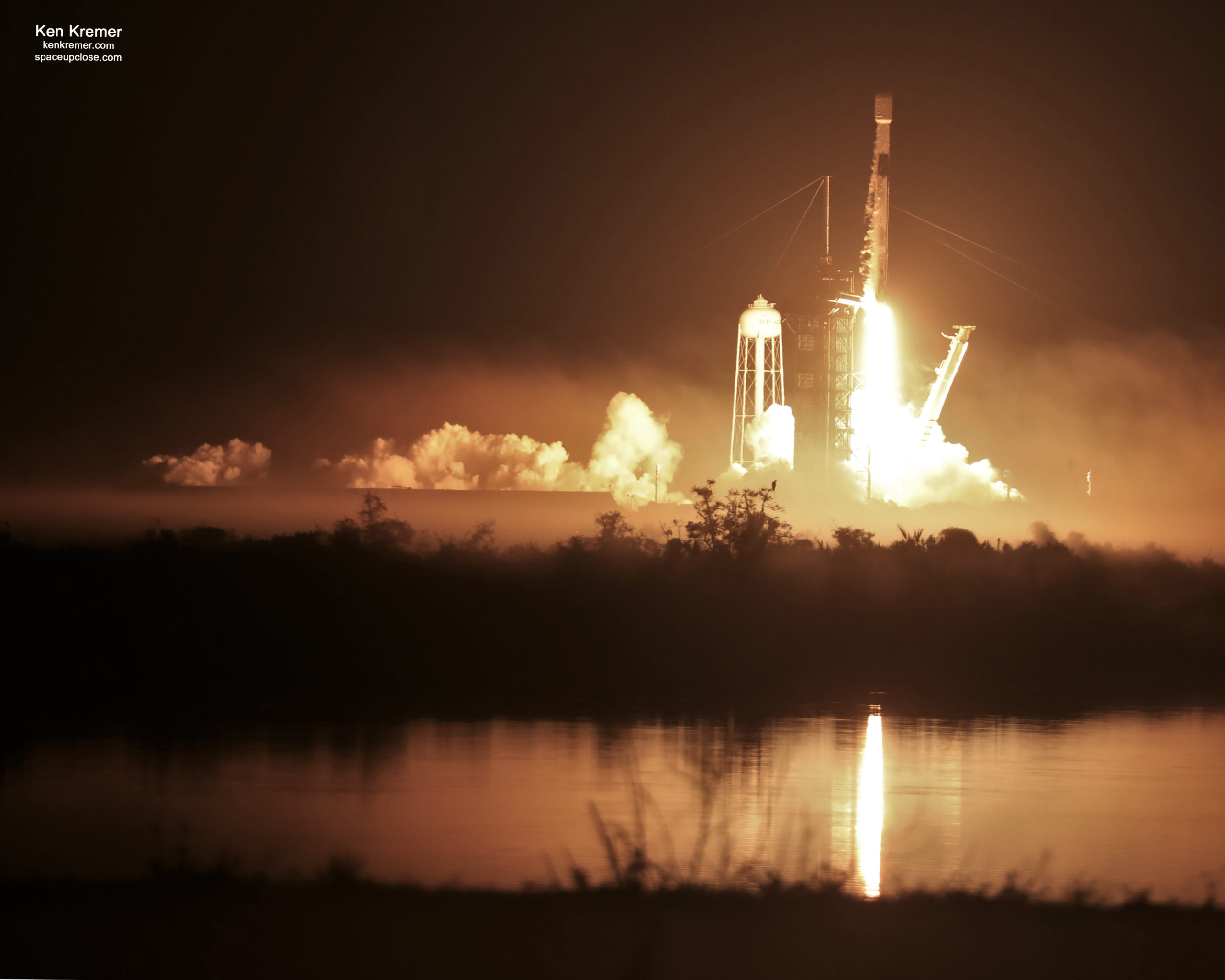
Some eight and a half minutes after liftoff the reused first stage stuck the landing on the “Of Course I Still Love You” (OCISLY) droneship. OCISLY was prepositioned in the Atlantic Ocean off the coast of the Carolina’s some 400 miles (640 km) northeast of the launch site.
This mornings liftoff used the flight-proven 1st stage booster B1051.9 which has now flown to space and back 9 times and sets up the prospect for another record setting 10th flight in the not too distant future.
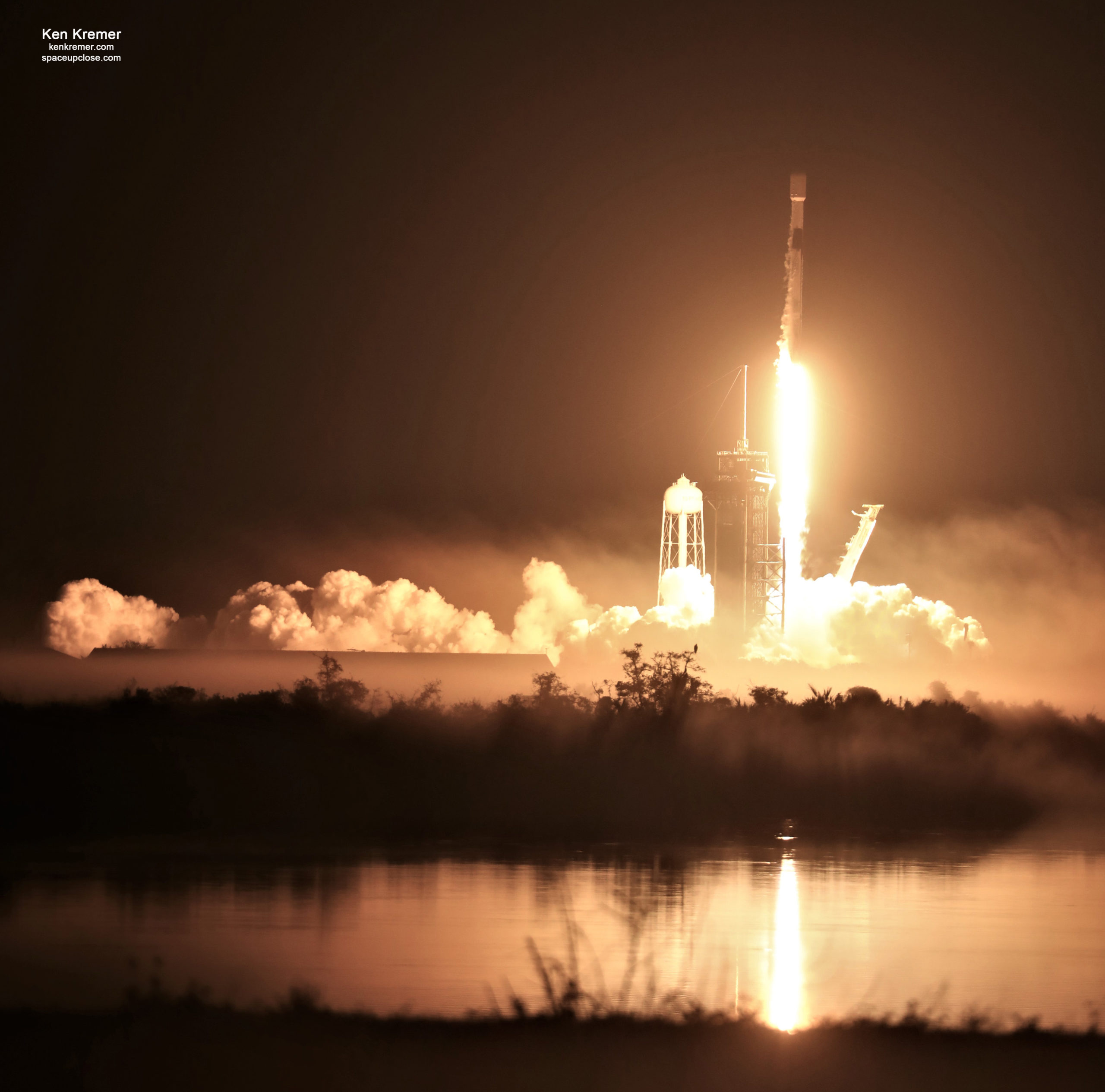
The 229-foot-tall (70-meter) Falcon 9 flew into clear and star filled night skies and successfully delivered the twenty second Starlink internet satellite mission with five dozen Starlinks encapsulated inside the recycled nose cone to low Earth orbit (LEO) from Florida’s Spaceport.
All 9 Merlin 1D first stage engines ignited to generate approx. 1.7 million pounds of liftoff thrust fueled with liquid oxygen and RP-1 propellants that began propellant loading at T Minus 35 minutes.
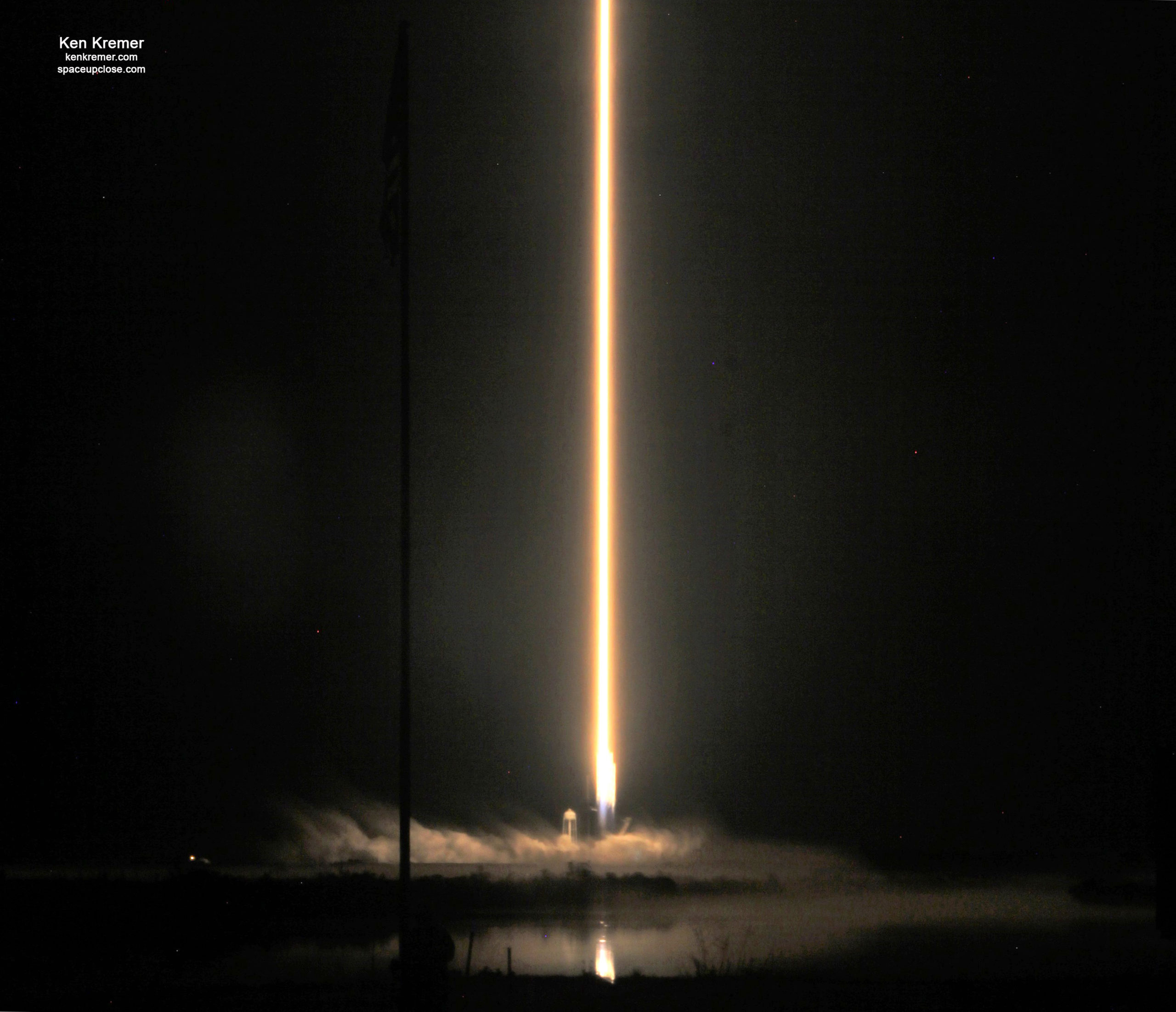
The two-stage Falcon 9 rocket launched on a northeasterly trajectory from Cape Canaveral targeted to deliver the 60 Starlinks to an initial transfer orbit of 175 miles (283 kilometers) in altitude.
This 22nd Starlink mission is officially designated as V 1 L21.
Enjoy our eyewitness launch photos at Space UpClose from the team of Ken Kremer and Jean Wright.
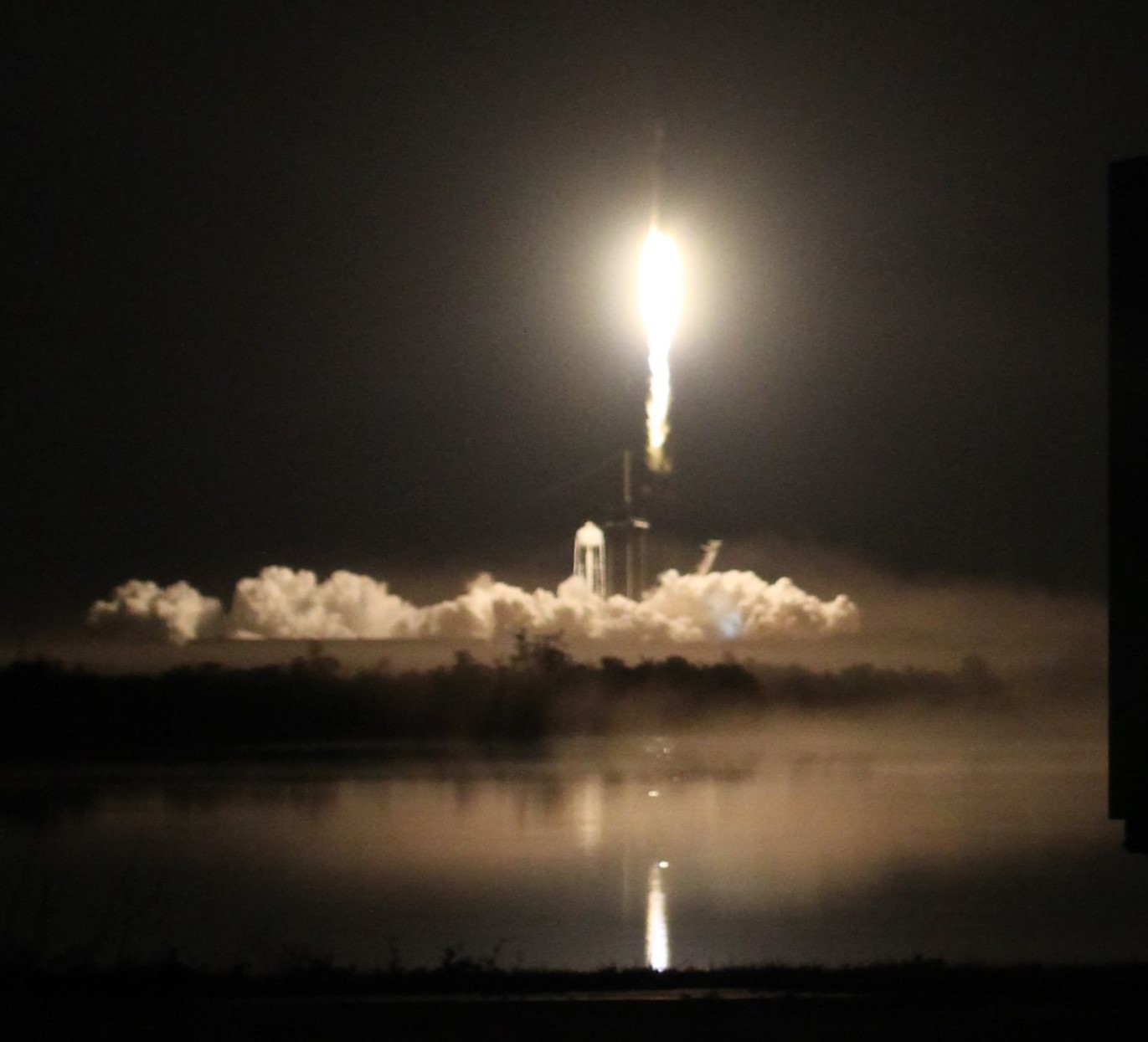
This was the 3rd Falcon 9 to liftoff in 10 days in March following two earlier ones on March 4 and March 11- see our stories and photos.
To date SpaceX has launched eight Falcon 9 rockets in 2021.
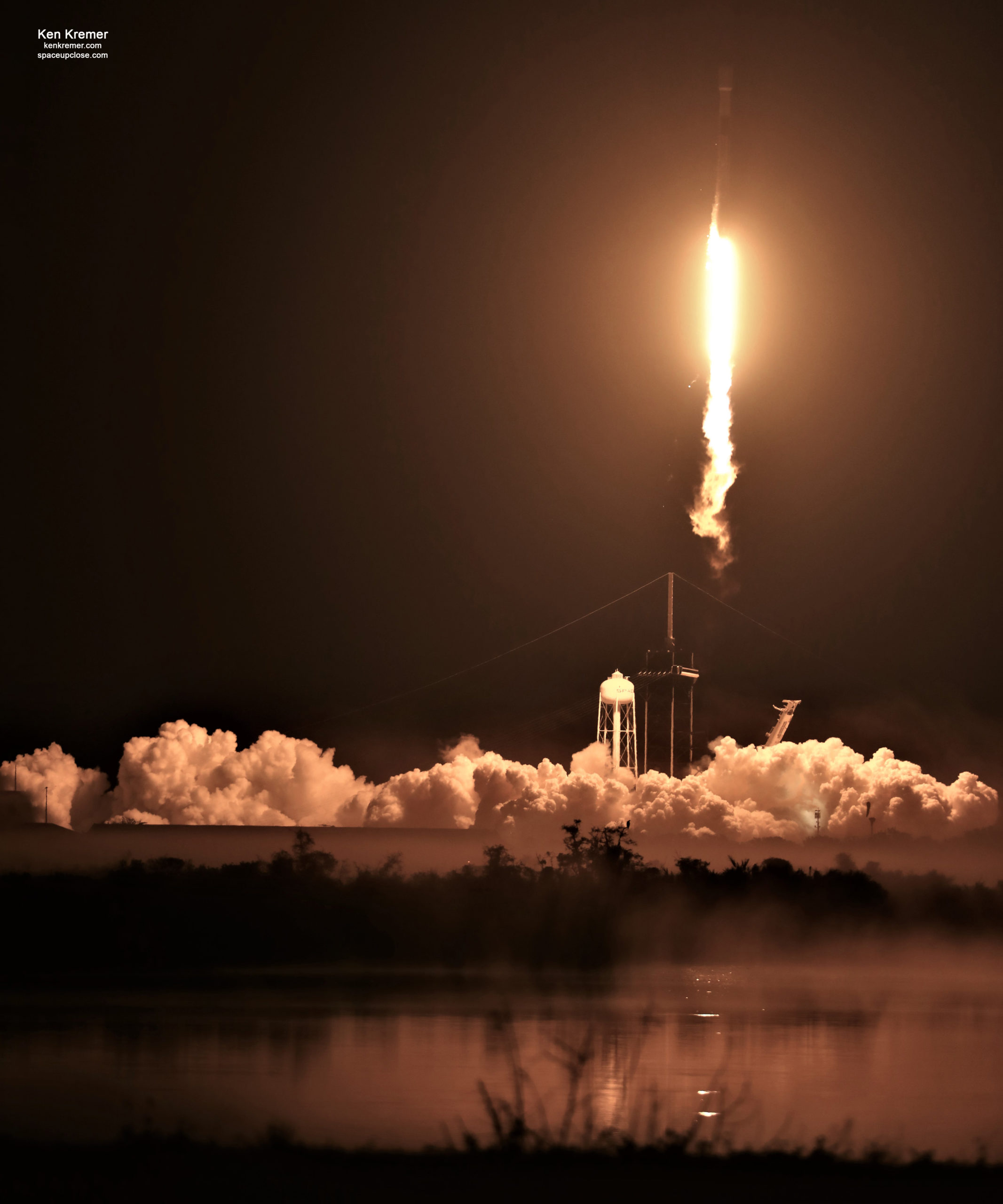
The Starlinks were successfully deployed about 1 hour and four minutes after liftoff at 7:05 a.m. EDT (1105 GMT).
Watch this SpaceX deployment video:
Deployment of 60 Starlink satellites confirmed pic.twitter.com/AMLK4R9dMn
— SpaceX (@SpaceX) March 14, 2021
Recycling the 1st stage boosters many times has enabled SpaceX to maintain a rapid launch cadence of nearly 3 launches per month last year and even more planned this year.
The Falcon 9 first stage B1051 supporting this mission previously supported launch of Crew Dragon’s first demonstration mission, RADARSAT Constellation Mission, SXM-7, and five Starlink missions most recently on Jan. 20, 2021.
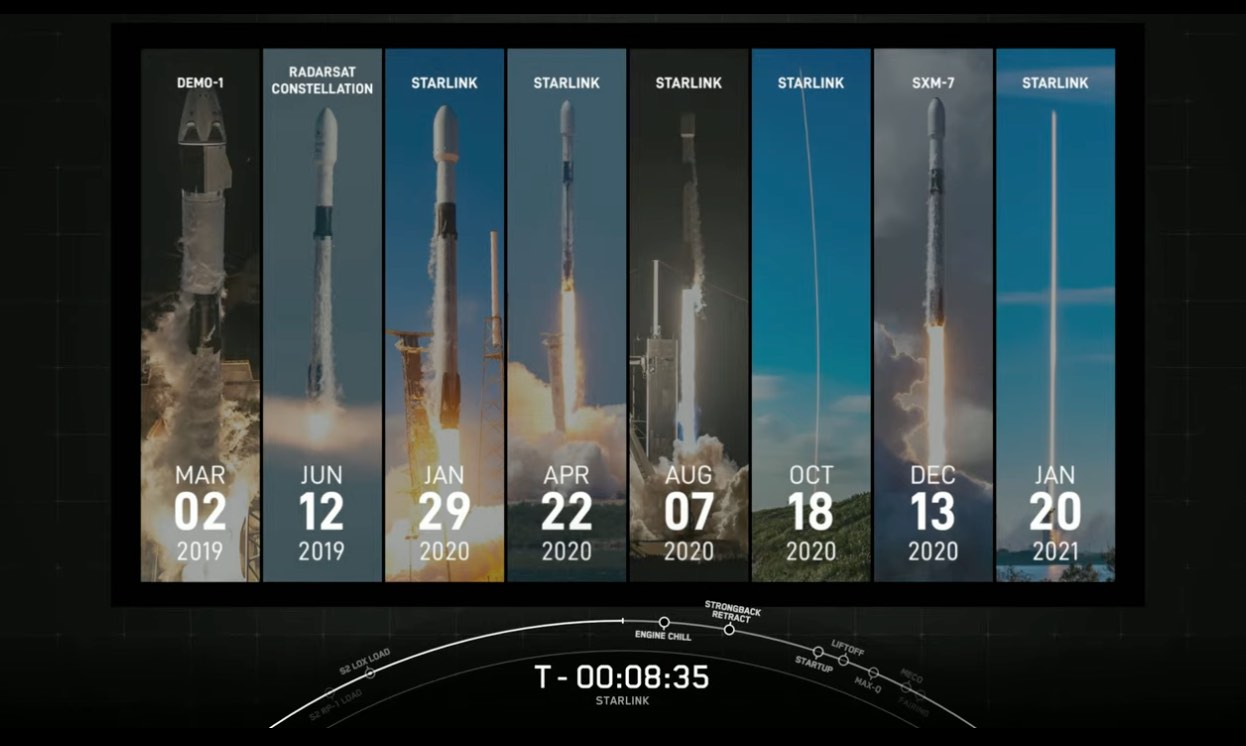
The payload fairings are also recycled having previously flown on the Transporter-1 mission.
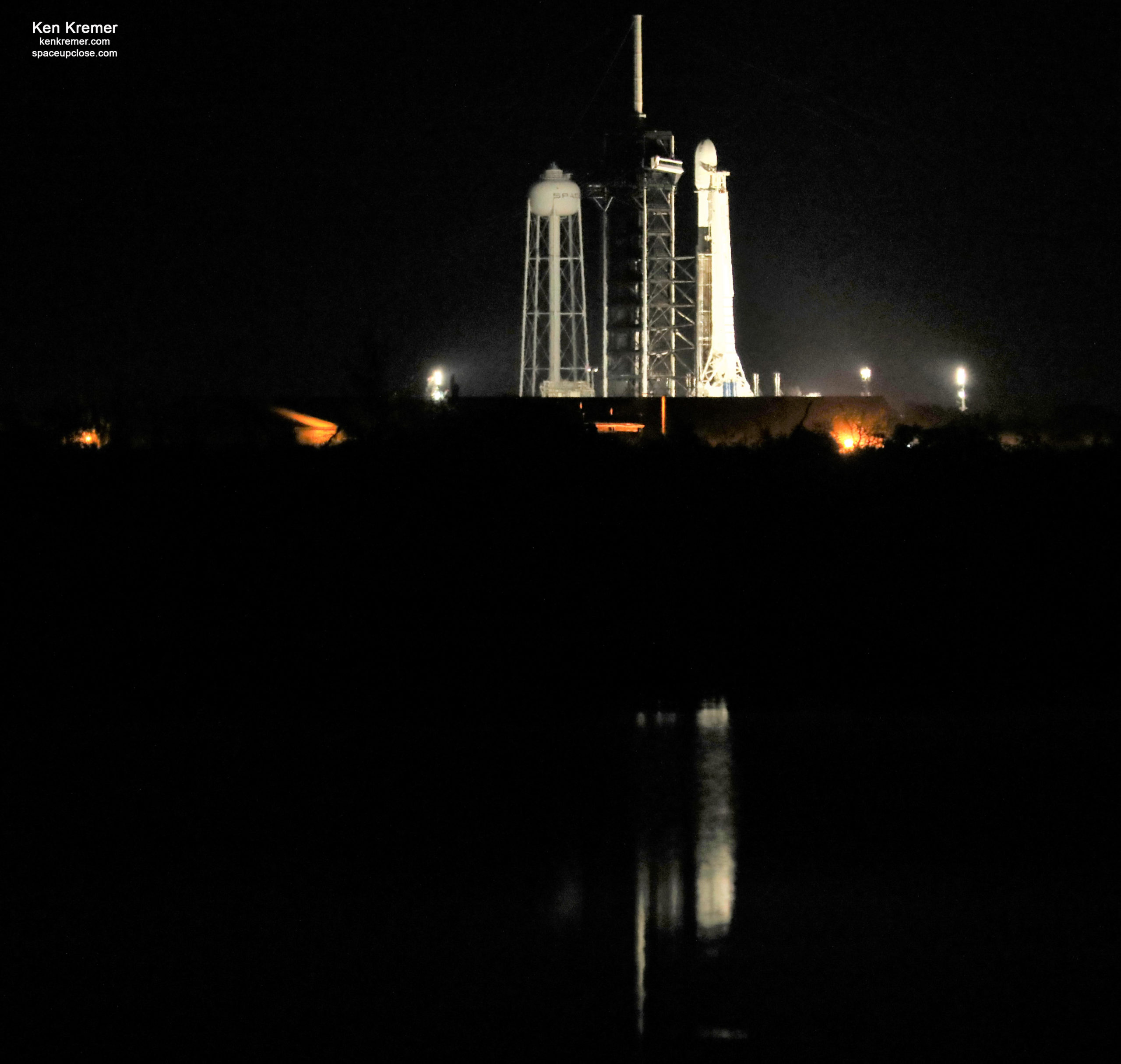
Overall this marked the 77th Falcon 9 1st stage landing by sea or land.
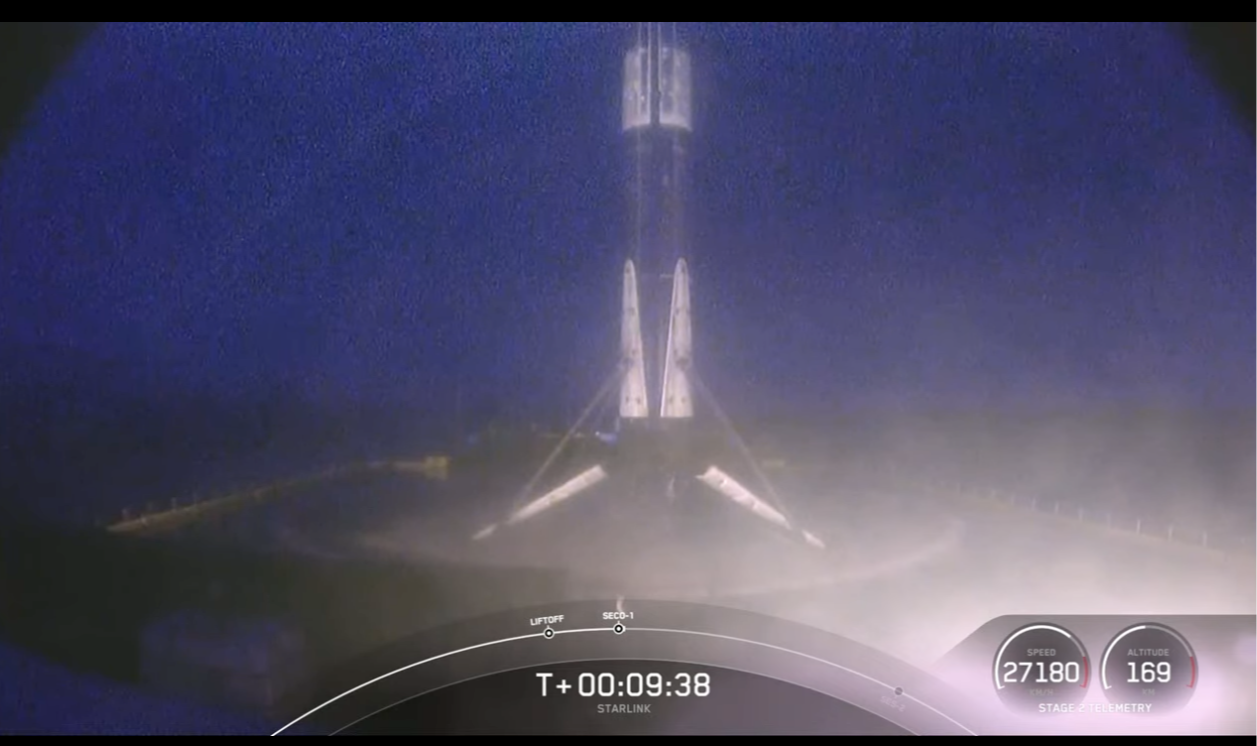
No video as the feed failed just prior to landing.
Falcon 9’s first stage has landed on the Of Course I Still Love You droneship, completing the ninth flight of that booster
— SpaceX (@SpaceX) March 14, 2021
SpaceX designed this Block 5 version of the Falcon 9 to launch 10 times with minimal refurbishment – and is on the cusp of achieving that goal soon with this now 9th flown/landed booster B1051.9 using the Starlink missions as test beds for gathering data in real time proving out the rocket vehicle’s hardwara and all systems with real rockets and for evaluation as to the way forward.
But they hope to continue beyond 10 launches after inspections and refurbishments and repairs as needed, says a SpaceX official.
“We’re learning a lot about refurbishment and we’re learning where the areas are where we need to pay attention to,” said Hans Koenigsmann, senior adviser for build and flight reliability at SpaceX, during a recent panel discussion at the 47th Spaceport Summit in Florida on Feb. 23
“We’ve been learning with every single landing.”
The booster’s heat shield and engine components are areas of focus, he said at the summit and and echoing other earlier comments to Space Up Close a few years back.
“We will continue to look at that booster and make an assessment whether we can move forward with it,” after achieving the 10 flight milestone, Koenigsmann said at the summit
“I don’t think the number 10 is a magic number.”
“We will inspect them regularly, at regular intervals. And the next time you check that the engine held up and see if there’s any damage there. To me, it is an engineering problem. I don’t think the number of 10 is a magic number.
“Also, for example, we could start phasing in new components at some point in time and actually extend the life of the booster.”
Starlink promises to offer High-speed, low latency broadband internet across the globe starting in rural areas and expanding.
SpaceX is planning for a Starlink constellation in excess of 10,000 satellites.
They initially need about 1,584 satellites to establish service in most of North America with Starlinks orbiting some 341 miles (550 kilometers) above Earth on traveling on paths inclined 53 degrees to the equator.
Starlink is now delivering initial beta service both domestically and internationally, and will continue expansion to near global coverage of the populated world in 2021.
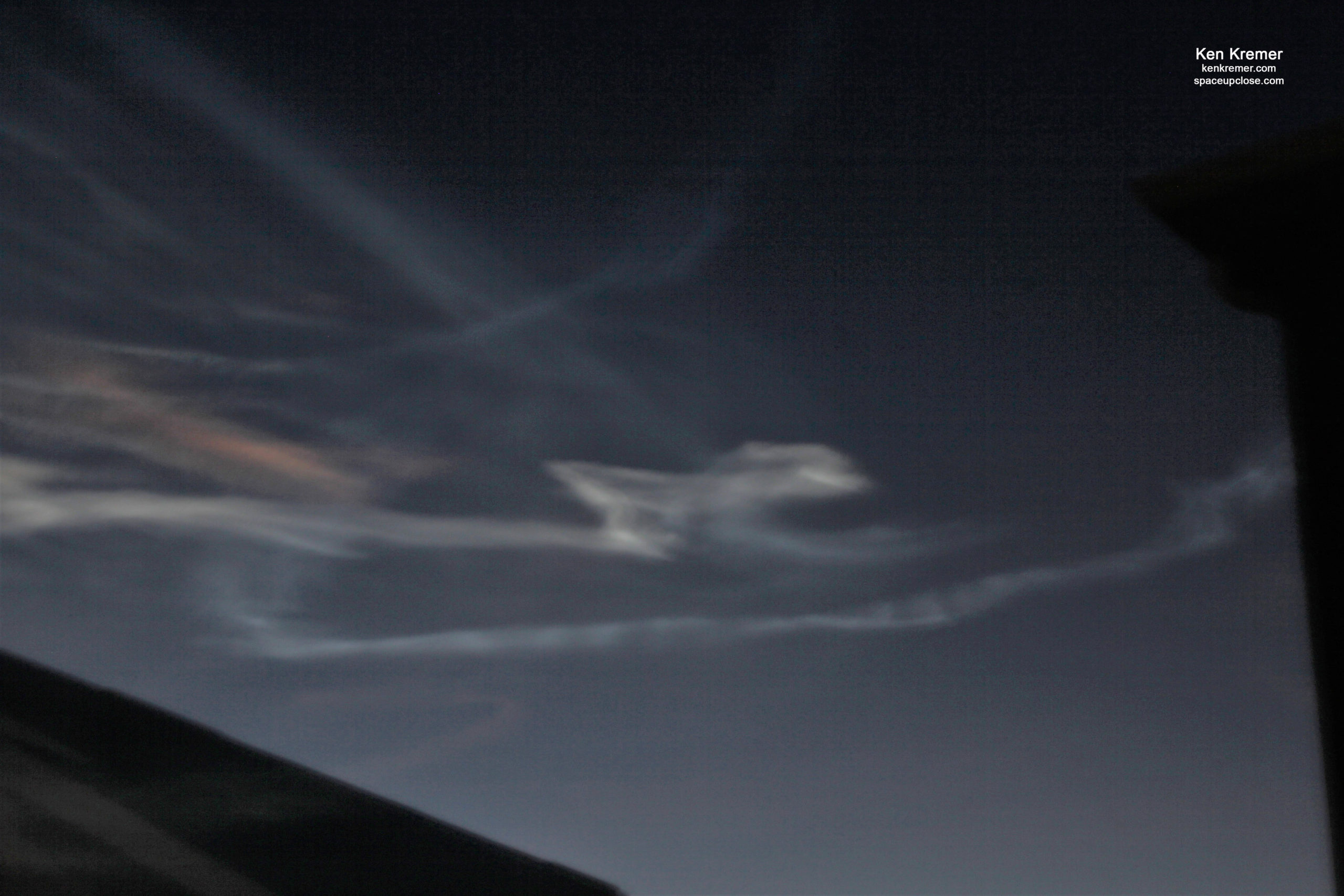
Following this latest 22nd batch that brings the total number of Starlink satellites launched to 1,325 internet satellites. That includes earlier prototypes mostly from the first launch as well as the 10 Starlink sats launched to polar orbit on the last Falcon 9 launch on Transporter-1 mission on Jan. 24. Check out our earlier story and photos
The actual number of Starlink satellites is estimated to be at least 60 less due to some earlier versions being intentionally deorbited due to malfunctions or other reasons.
Astronomer Jonathan McDowell keeps a running tally of Starlink at this page
https://planet4589.org/space/stats/megacon/starbad.html
The 500 pound flat panel Starlink satellites are manufactured by SpaceX in Redmond, Washington.
The new mission thus fortifies the Starlink constellation of relay satellites that one day upcoming will offer a competitive alternative to existing broadband services across North America – including the US and Canada
And now its expanding!
“This week, the Starlink team is excited to launch service in Germany and New Zealand for the first time, and expand its existing service in the UK.”
Learn more about our international coverage on our webcast, or visit starlink.com to see if Starlink is available in your area.
Initial Starlink service is priced at $99 a month.
The Starlink Starter kit sells for $499 upfront cost to order.
Watch this SpaceX tweeted liftoff video:
Liftoff! pic.twitter.com/V3vn9PolF0
— SpaceX (@SpaceX) March 14, 2021
The next Starlink launch is NET March 21.
Watch Ken’s continuing reports about Starlink, Mars 2020 Perseverance and Curiosity rovers, Artemis and NASA missions, SpaceX, Commercial Crew Starliner and Crew Dragon and onsite for live reporting of upcoming and recent SpaceX and ULA launches including Crew 1 & 2, Demo-2, ISS, X-37B, Solar Orbiter, NRO spysats and national security missions and more at the Kennedy Space Center and Cape Canaveral Space Force Station.
Stay tuned here for Ken’s continuing Earth and Planetary science and human spaceflight news: www.kenkremer.com –www.spaceupclose.com – twitter @ken_kremer – email: ken at kenkremer.com
Dr. Kremer is a research scientist and journalist based in the KSC area, active in outreach and interviewed regularly on TV and radio about space topics.
………….
Ken’s photos are for sale and he is available for lectures and outreach events
Please consider supporting Ken’s work by donating at Patreon:
https://www.patreon.com/kenkremer
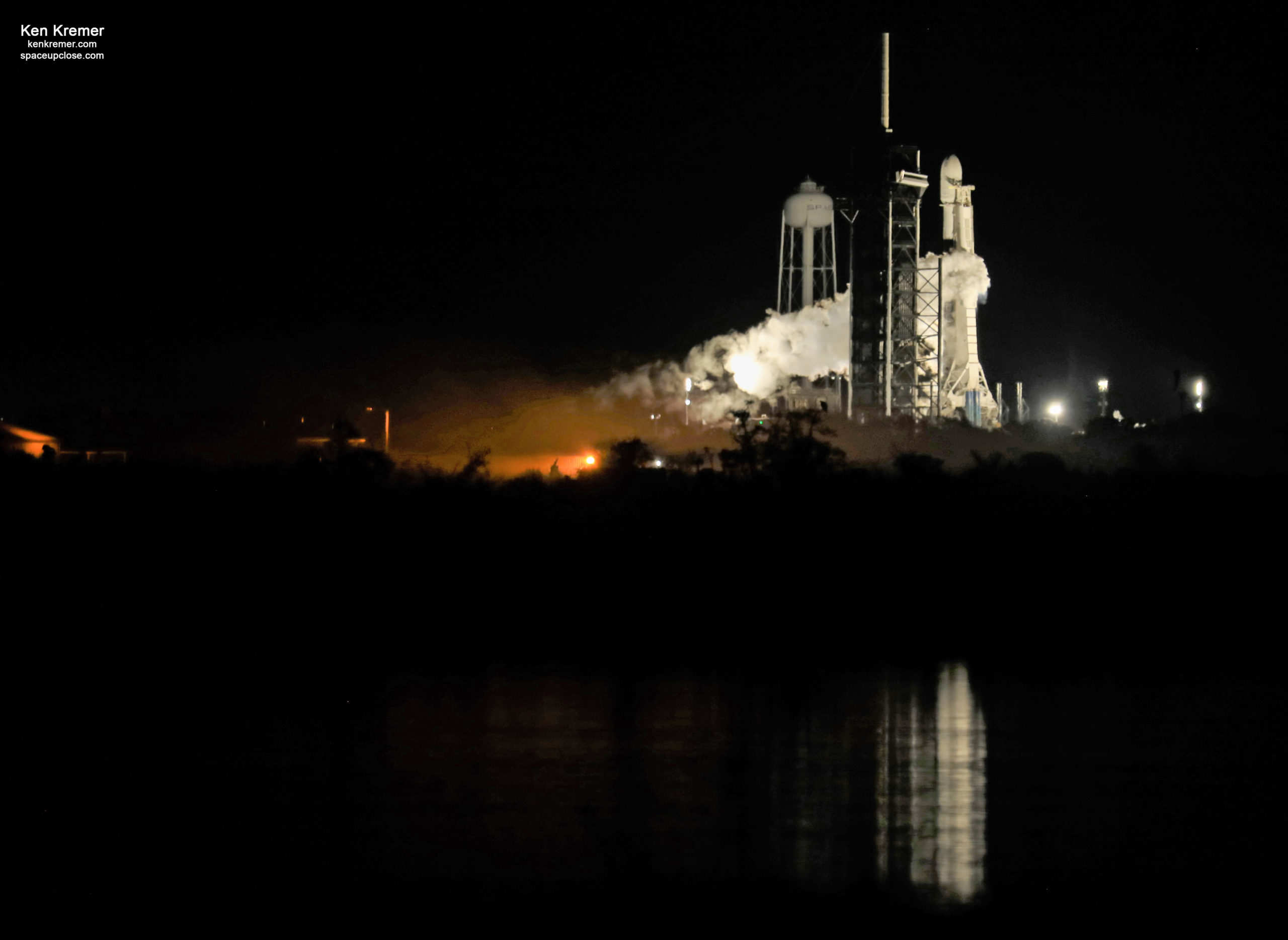
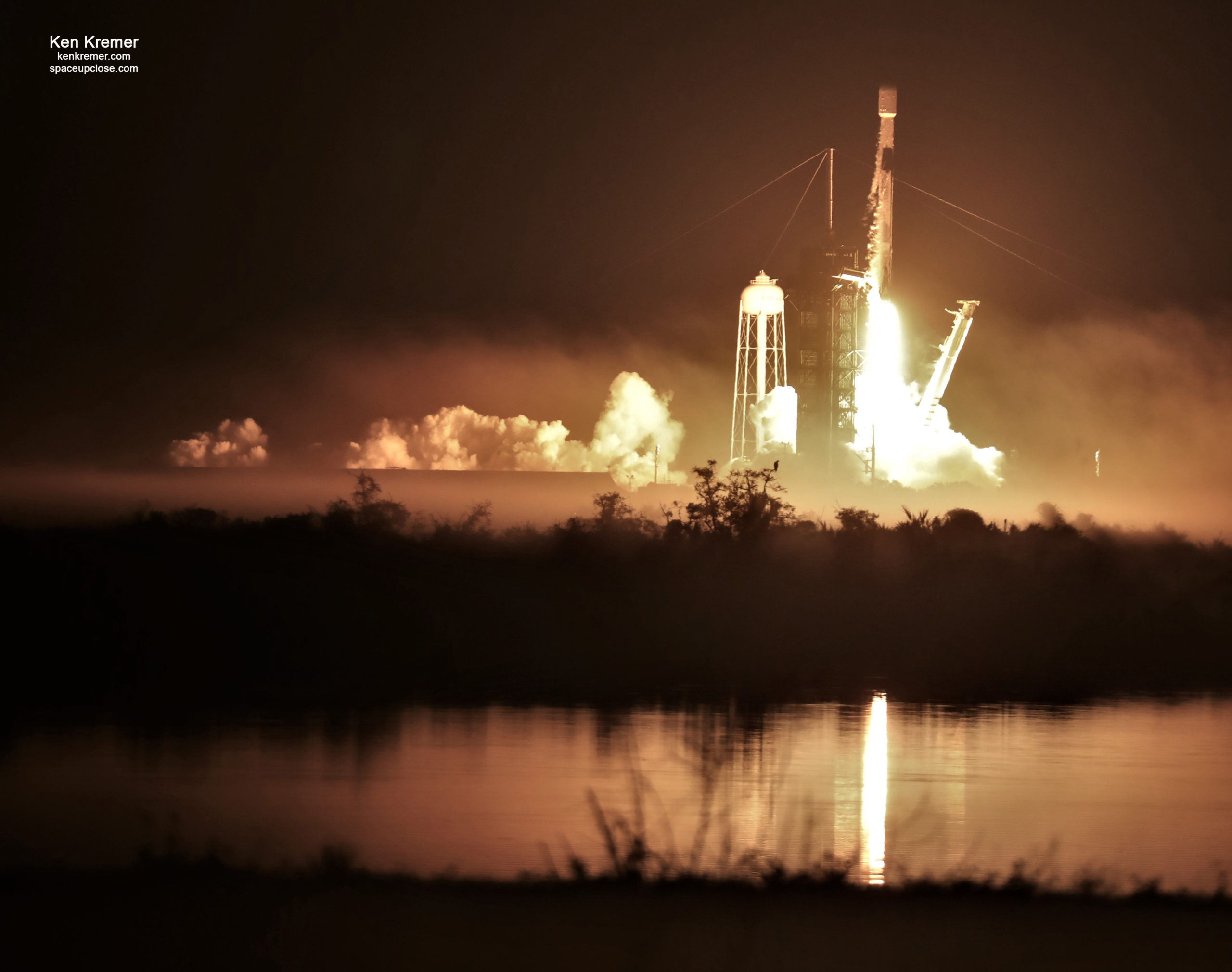
x



